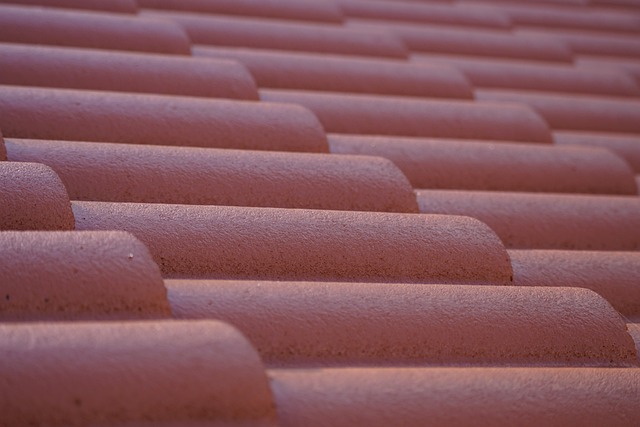Multi-tiered roof designs elevate architecture with complex layers that add depth and visual interest, offering both aesthetic appeal and functional benefits. These sophisticated structures incorporate varying slopes, heights, and materials, allowing for customized tiers to suit specific needs. By maximizing space, enhancing insulation, and accommodating outdoor living, multi-tiered roofs revolutionize building design while prioritizing aesthetics and practicality in urban areas. The intricate process requires meticulous structural planning, with strategic integration and sealing techniques ensuring stability and visual coherence. Popular styles include multi-slope and hip roof designs, catering to diverse architectural needs from historic to modern structures, ultimately enhancing depth and interior space versatility.
Discover the allure of multi-tiered roofs, a design element that adds depth and architectural elegance to any structure. This article delves into the conceptual overview, aesthetic appeal, and structural considerations of these intricate systems. From space optimization to popular styles and applications, explore why multi-tiered roof designs are a game-changer in modern architecture. Uncover the engineering challenges and benefits, making them a top choice for both residential and commercial projects.
Understanding Multi-Tiered Roof Designs: A Conceptual Overview
Multi-tiered roof designs are a sophisticated architectural concept that adds depth and visual interest to any structure. This approach involves creating multiple levels or layers on a roof, each with its own distinct characteristics, such as varying slopes, heights, and even materials. By layering these components, architects can craft intricate patterns and silhouettes, transforming the rooftop into an integral part of the building’s overall aesthetic.
The beauty of multi-tiered roofs lies in their ability to offer both functional and decorative benefits. From a practical standpoint, these designs can provide additional space for insulation, ventilation, or even outdoor living areas. Each tier can be tailored to specific needs, allowing for greater flexibility and adaptability. Estetically, they create a sense of movement and dynamism, breaking up the monotony of a single-pitched roofline. This is particularly effective in creating depth and dimensionality, enhancing the overall architectural elegance of the building.
Architectural Benefits and Aesthetic Appeal of Multi-Tiered Roofs
Multi-tiered roof designs offer a myriad of architectural benefits, enhancing both functionality and aesthetic appeal. By incorporating multiple levels into a roofing system, architects and designers can create dynamic structures that capture light and shadow in unique ways, adding depth and visual interest to any building. This innovative approach allows for better insulation, as each tier can be optimized for specific climate considerations, leading to energy efficiency.
Esthetically, multi-tiered roofs bring a sense of elegance and complexity to a structure’s exterior. The interplay of different heights and slopes creates a visually captivating silhouette, especially when viewed from certain angles or at different times of the day. These designs can also accommodate outdoor living spaces, providing areas for relaxation or entertainment that are shielded from direct sunlight but still benefit from natural ventilation.
Designing for Functionality: Space Optimization in Multi-Tiered Structures
Multi-tiered roof designs offer a unique opportunity for space optimization, especially in structures where vertical real estate is at a premium. By layering rooftops, architects can create additional living or working areas while enhancing the overall architectural elegance. This approach is particularly beneficial in urban settings where land is scarce and demand for mixed-use spaces is high. Each tier can be tailored to serve distinct purposes—a garden area, sun deck, or even a small office—allowing for versatile functionality that caters to diverse lifestyles and needs.
Functionality in multi-tiered roofs goes beyond space division. Proper design considers factors like sunlight exposure, ventilation, and accessibility. Careful orientation of each tier can maximize natural light penetration and cross-ventilation, creating a comfortable microclimate. Stairs or elevators specifically designed for these structures ensure easy access to higher levels, making them not just aesthetically pleasing but also highly practical and user-friendly.
Structural Considerations and Engineering Challenges
Creating multi-tiered roofs involves careful structural considerations and engineering challenges. Each tier must be designed to support its own weight while also contributing to the overall stability of the entire structure. Engineers employ advanced calculations to ensure that the load distribution is even, preventing any single point from becoming a weak link. Materials play a crucial role; steel, wood, and concrete are commonly used for their strength and versatility in crafting complex designs.
One significant challenge lies in connecting the tiers seamlessly while maintaining aesthetic elegance. Sealing and joining techniques must be precise to prevent water leakage and ensure longevity. Additionally, architectural elements like slopes, valleys, and overhangs require meticulous planning to manage runoff and shadow effects, enhancing both functionality and visual appeal of multi-tiered roof designs.
Popular Multi-Tiered Roof Styles and Their Applications
Multi-tiered roofs have gained significant popularity in modern architecture for their ability to enhance both structural depth and aesthetic elegance. Several styles have emerged, each catering to specific design needs and applications. One notable style is the multi-slope roof, characterized by multiple inclines that create a dynamic silhouette. This design is often chosen for residential buildings due to its balanced combination of visual appeal and practicality. The slopes can be arranged in various configurations, offering flexibility in terms of water runoff and shadow casting.
Another favored multi-tiered roof design is the hip roof, which features sloping sides that meet at a ridge line. This style adds a touch of classic sophistication to structures, making it popular for historic buildings and traditional homes. Hip roofs are known for their durability and ability to shed water effectively, making them suitable for regions with varying climates. They can also accommodate various interior space configurations, enhancing the functional versatility of the building.
Multi-tiered roof designs offer a dynamic blend of architectural elegance and spatial efficiency, enhancing both the functionality and aesthetic appeal of buildings. By strategically layering roofs, these designs provide deep, visually captivating structures that cater to modern design preferences. Through careful structural planning and consideration, architects can overcome engineering challenges to create harmonious, multi-functional spaces that enrich urban landscapes. The versatility of multi-tiered roofs allows for innovative applications across diverse building types, solidifying their status as a game-changer in contemporary architectural discourse.
